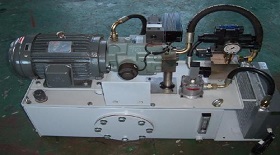Hydraulic system maintenance
A system is generally rinsed before formal input. The purpose of rinsing is to remove the contaminants, metal scraps, fiber compounds, iron cores, etc. that remain in the system. In the first two hours of operation, even if the system is not completely damaged, a series of failures can be caused. Therefore, the following steps should be followed to clean the oil path of the system.
1) Cleaning the oil tank with a dry cleaning solvent and removing solvent residue with filtered air.
2) Cleaning all piping of the system. In some cases, it is necessary to dip the piping and joints.
3) Installing oil filter in the pipeline to protect the oil supply pipeline and pressure pipeline of the valve.
4) Installing a flush plate in the collector to replace the precision valve, such as electro-hydraulic servo valve.
5) Checking whether all piping dimensions are appropriate and connection is correct.
If the electro-hydraulic servo valve is used in the system, servo valve have flush plate that can make the oil flow from oil pipeline to current collector and directly return to the fuel tank, so that we can make the oil circulation repeatedly to flush system, making the oil filter filter out solid particles. When washing process, every 1 ~ 2 hours check the oil filter, in case of oil filter is plugged. Then pollutants bypass don't open right now.
The cycle of flushing is determined by the system structure and the system pollution degree. If the sample of the filter medium is free or little foreign pollutant, installing new oil filter, unloading the washing plate and installing the valve to work!
Planned maintenance should establish the system regular maintenance system, and the recommendations for better maintenance of the hydraulic system are as follows.
1) Oil must be inspected and replaced for up to 500 hours or three months.
2) Flushing the imported oil filter regularly.
3) Checking whether the hydraulic oil is acidified or polluted by other pollutants. The smell of hydraulic oil can be roughly identified as whether it is deteriorated.
4) Repairing the leakage in the system.
5) Ensuring that no foreign particles enter the tank through the vent cover of the tank, the plug seat of the oil filter, the sealing washer of the return pipeline road and other openings of the tank.



